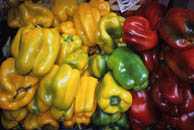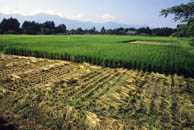
Local Economies
Urban Economic Studies
Our studies of local urban economies place us at the forefront of Community Economic Development (CED) efforts nationally. Crossroads’s thorough studies of local economies offer a powerful tool for community groups to use to assess the strengths and limitations of their local economy. Each study produces a “Neighborhood Income Statement and Balance Sheet.”
Five studies have been completed to date.
For a summary, see  Neighborhood Balance Sheets Assess Local Economies. Individual summaries may be requested from Crossroads.
Neighborhood Balance Sheets Assess Local Economies. Individual summaries may be requested from Crossroads.
Another useful tool is Crossroads’s position paper  Neighborhood Commercial Development for the Long Term showing that building strong neighborhood commercial districts involves building wealth for local residents.
Neighborhood Commercial Development for the Long Term showing that building strong neighborhood commercial districts involves building wealth for local residents.
In our studies, covering thirteen lower-income Twin City, Minnesota, neighborhoods so far, a net total of $650 million EACH YEAR has been tracked flowing out of the neighborhoods as residents purchase daily essentials.
Neighborhoods studied include:
Phillips Neighborhood (1993)
Phillips is a very low income neighborhood of 17,000 just south of downtown Minneapolis, with a mix of Native American, African, African-American, Asian-American, and European-American residents. Phillips contains one of the largest urban Native American communities in North America as well as a district of workers’ homes (that have been declared of historic value), several large former mansions, and two major hospitals. Until recently, it contained the world headquarters of the Honeywell corporation.
Frogtown (1994)
Frogtown is a very low income neighborhood in St. Paul located west of the Minnesota state capitol. More than 14,000 African-American, Asian-American, and European-American citizens dwell here. Regions, Gillette, and Health East hospitals are also located in Frogtown.
Dayton’s Bluff (1995)
Formerly a neighborhood of factory workers and downtown office staff, Dayton’s Bluff boasts a rich and colorful history centered on Swedish, Mexican, Irish, and Italian immigrants. New African-American and Asian-American communities are growing rapidly, as is the largest Native American community of St. Paul. Here, Metropolitan State University has its main campus in this neighborhood of 19,000. A resident group created a visionary master plan for the revitalization of this neighborhood and a nearby creek.
Powderhorn (1995)
Powderhorn is a neighborhood of 7,000 located just south of the Phillips neighborhood (south of Lake Street) in South Minneapolis. Powderhorn has a strong mix of African-American, Asian-American, and European-American residents living in homes that were primarily built in 1910 to 1930.
Camden Community (1995)
Camden Community consists of 9 neighborhoods in the northwest corner of Minneapolis, including the Cleveland, Folwell, Hawthorne, Jordan, Lind-Bohanon, McKinley, Shingle Creek, Victory, and Webber-Camden neighborhoods. This formerly white middle-income area is undergoing a rapid transformation as African-American and other new families move in.
To see how we create a Local Economic Study
tailored to your region (urban or rural), download our
 Draft Scope of Work
Draft Scope of Work
Rural Economic Studies
Crossroads Resource Center’s President Ken Meter covered the farm crisis of the 1980s as an independent journalist. This work took him to 11 foreign nations, where farmers passed on some hard-won insights into the nature of the rural economy. He also studied the crisis at home. Along the way, one community of Minnesota farmers showed Ken that healthy rural communities have healthy local credit sources. To read more about these farmers’ views, download  Green Isle: Feeding the World and Farming for the Banker (1983).
Green Isle: Feeding the World and Farming for the Banker (1983).
Following up the wisdom of these farmers with academic research, Meter discovered that rural communities heavily subsidize the national economy. This is documented in his study  Money With Roots (1990). Ken also wrote about how U.S farm policy can better support rural communities in
Money With Roots (1990). Ken also wrote about how U.S farm policy can better support rural communities in  Writing Farm Policy (1986).
Writing Farm Policy (1986).
The Original “Finding Food in Farm Country” Study
As rural economies continued to weaken during the 1990s, the wisdom of examining rural communities—not simply farm commodities or farm families—became more clear.
In 2001, Ken Meter, along with Jon Rosales of the Institute for Social, Economic, and Ecological Sustainability at the
University of Minnesota, created a detailed study of the farm and food economy of the Southeast Minnesota region.
This study showed that one of the more successful farm areas in the nation loses $800 million EACH YEAR as farmers raise
food and consumers buy food. This is a staggering loss of more than $2 million per day. Furthermore, it amounts to 20 times
the amount of money returned to the region by farm support programs. Download
 Finding Food in Farm Country (2001) to read this groundbreaking study.
Finding Food in Farm Country (2001) to read this groundbreaking study.
Meter was invited to testify to the August 20, 2001, hearing of the Senate Agriculture Committee, held in Stewartville, Minnesota, where he presented the results of Finding Food in Farm Country. Read Ken Meter’s testimony.
Read Ken Meter’s testimony.
Since that original study, Crossroads has partnered in studies of 70 rural regions in 30 states and Canada! See the entire list of studies at our Local Farm & Food Economy Studies page. Most of the reports are available for free download.
Similar studies can be performed in any rural county (or group of counties) in the U.S. To learn more about how Crossroads Resource Center can help your region perform its own study of the local farm and food economy, please contact us.











